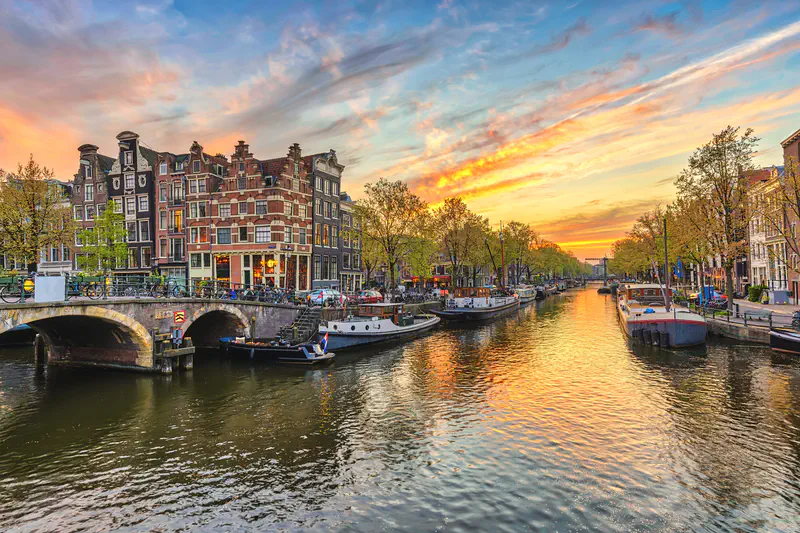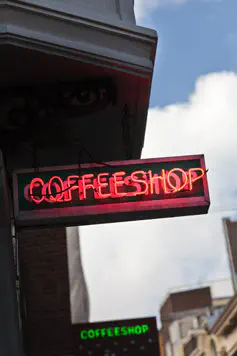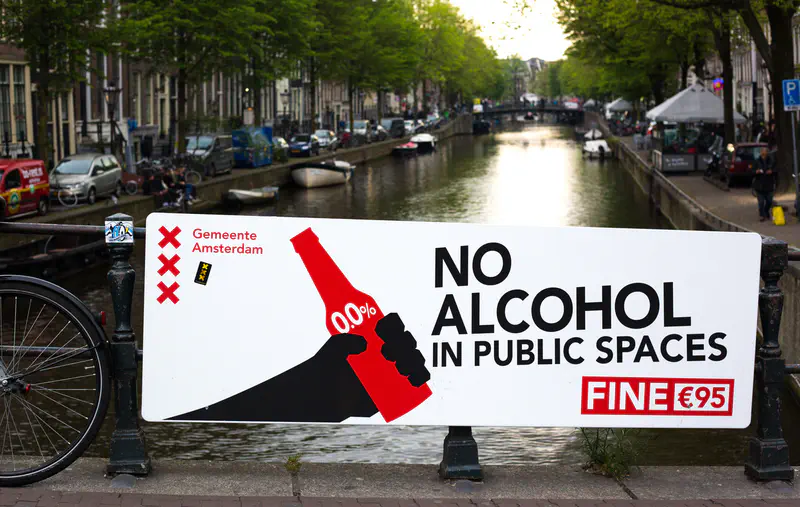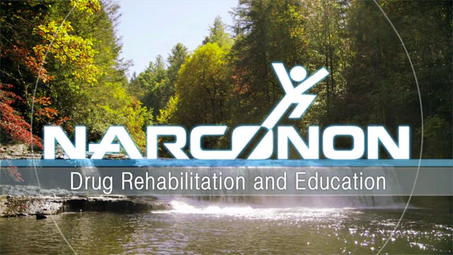Drugs, Alcohol and Treatment in the Netherlands

Many countries around the world point at the Netherlands as an example of how liberalization of drug laws can succeed. But is this really the situation in this country? Actually, the Netherlands has the highest rate of use for some drugs of all the EU countries. This isn’t exactly a sign of success.
Cannabis
The Netherlands and in particular Amsterdam are well-known for their tolerance of cannabis use. In the 1970s, the Netherlands adopted a policy of classifying cannabis as a “soft drug” and not subject to the same restrictions as drugs like heroin or cocaine.
This led to the establishment of the famous “coffee shops” 1 that would sell small quantities of cannabis to patrons. By 1999, there were 850 of these shops.

The presence of these shops created some problems when tourists from other countries, often neighboring countries, traveled into the Netherlands to patronize these coffee shops. By 2011, policies began to shift in an effort to eliminate these problems. First, there was an attempt to place a limit on the potency of the drug. Then there was a proposal that only a person with a “weed pass” (only available to residents of the Netherlands) could purchase cannabis in a coffee shop. Shops near schools were closed.2
By 2011, there were 650 shops remaining. Despite continuing debate, these shops stay open and providing coffee and cannabis to customers.
How many young adults use cannabis? Last year prevalence was 17.5% for those between the ages of 15 and 35.3 This is according to the 2019 European Monitoring Centre for Drugs and Drug Addiction (EMCDDA) report. This puts the Netherlands in fifth place after France, Italy, Czechia and Estonia.
Of those going to treatment for addiction, cannabis addiction accounts for nearly half of all entrants.3 In 2019, the EMCDDA published a study that sought to determine if the increasing potency of cannabis products in the Netherlands would account for the increasing number of people going to rehab because of this drug.4
This study found that the THC content of cannabis products increased from a mean of 8.62% to 20.38%, and then it decreased to 15.31% in 2015. First-time cannabis admissions over the same period of time increased from 7.08 per 100,000 citizens to 26.36 and then dropped to 19.82 per 100,000 in 2015. While there may also be other factors at work, there is a definite correlation between potency and the rate of admissions.
Cocaine
The drug in the number two position for sending people to rehab is cocaine, accounting for 24% of those admitted.3 Cocaine is also the drug with the greatest volume of seizures. In 2017, more than 14,000 kg were seized. Compare this to heroin seizures of 1110 kg.
Then in 2018, 18,000 kg were seized.5 By November of 2019, 28,000 kg had already been seized that year.6
Like Spain, the Netherlands is an important distribution point and transit hub for cocaine entering the EU.7 Most cocaine comes in through Rotterdam or Antwerp.
In August 2020, police dismantled the largest cocaine lab ever found in the country.8 In the tranquil countryside northeast of Amsterdam, enough chemicals and equipment were found to turn partially processed coca paste into 150 to 200 kilos of cocaine per day.
One analysis of this rapidly increasing volume of cocaine entering the country attributed the increase to greater cocaine production in Colombia.9
Heroin
Heroin is the reason for seeking rehab of only 9% of those entering treatment. Out of a population of more than 11 million, only an estimated 14,000 are high-risk opioid users, meaning that they are most likely addicted to this drug. With syringe distribution and the use of Opioid Substitution Treatment (OST, usually methadone), the Dutch seem have a stable situation with regard to opioid use and addiction.
An aging heroin-using population may be another reason for a lack of growth in this area.10 Young people are more interested in stimulants than opioids, so they don’t contribute to an increase in the number of people using heroin as they grow into the prime drug-abusing years.
In 2015, the latest information available, 64 people died from opioid overdoses while another 40 died from cocaine overdoses.
Ecstasy
Ecstasy, also called MDMA, has long been manufactured in the Netherlands. In fact, the country has been one of the world’s largest producers of this drug.11 A 2018 report estimated that €18.9 billion in synthetics drugs including ecstasy and amphetamine had been produced in the country the year before. Tillburg, in the south of the country, is said to have a reputation as the prime ecstasy production region.12
After cocaine and cannabis, ecstasy was the third-most seized drug by quantity, at 1,250 kg seized in 2017.3
Of course, much of this product is distributed to other countries. Ironically, though the Dutch have been praised for treating drug addiction as a health problem rather than a criminal problem, the country are the source of much of the world’s ecstasy.
The EMCDDA estimated that 7.1% of the country’s population had used ecstasy in the last year. This figure was the highest of all the EU countries.
Nearly 4% of young adults reported that they had used amphetamine.3 Again, the Netherlands had the highest statistic for amphetamine use in the last year of all the countries in the EU.
Alcohol

Compared to other EU countries, the Netherlands has a low rate of alcohol consumption, with only Italy and Iceland having lower rates.13 In fact, their rate of excessive drinking is on the decline.14 Between 2014 and 2018, those engaging in excessive drinking fell from 9.9% to 8.2% of Dutch adults.
Still, the Netherlands lost far more people to alcohol consumption than to drug overdoses. The 2019 Global Burden of Disease Study estimated that 8,300 lives were lost in the prior year as a result of alcohol consumption, compared to fewer than 300 drug deaths.15
Alcoholics Anonymous in the Netherlands estimates that 30,000 people are in treatment for alcoholism each year.16
Treatment in the Netherlands
There are roughly 30,000 people in drug addiction treatment, with 11,000 entering each year.3 Most people are treated in outpatient settings.
A little over 1,000 receive OST, usually in the form of methadone, although heroin-assisted treatment (HAT, offering pharmaceutical heroin) is available at 17 clinics across the country.3
The number of people needing care for cannabis addiction has been on a slight increase since 2009, while the number asking for help with other drugs (cocaine, opioids, amphetamine and other drugs) has been on a slight decline or flat.
The Dutch can be proud of their humane approach to addiction but at the same time, they realize that their high levels of distribution and consumption of ecstasy and amphetamine mean that there is much work still to be done.
Sources:
-
Steve Rolles—Transform Drug Policy Foundation (2014), “Cannabis policy in the Netherlands: moving forwards not backwards” See Article available on UNODC—also available www.tdpf.org.uk (PDF) ↩︎
-
theguardian.com (ca. 2012), “Dutch government decrees that all cannabis cafes are off-limits to tourists” News Article ↩︎
-
European Monitoring Cenre for Drugs and Addiction (2017), “Netherlands Country Drug Report 2019”. EMCDDA Report (PDF) ↩︎ ↩︎ ↩︎ ↩︎ ↩︎ ↩︎ ↩︎
-
Freeman, T P; van der Pol, P; Kuijpers, W; Wisselink, J; Das, R K; Rigter, S; Van Laar, M; Griffiths, P; Swift, W; Niesink, R; Lynskey, M T; Cambridge University Press, Available via the EMCDDA (2018), “Changes in cannabis potency and first-time admissions to drug treatment: a 16-year study in the Netherlands”. From EMCDDA document library ↩︎
-
nltimes.nl (2019), “Cocaine seizures at the Port of Rotterdam skyrocket, already surpassing 2018 figures”. nltimes News Article ↩︎
-
dutchnews.nl (2019), “Rotterdam cocaine seizures hit 28 tonnes, mayor calls for more investigators” dutchnews News Article ↩︎
-
Irma Vermeulen, Wouter van der Leest, Vanessa Dirksen; Politie—National Police of the Netherlands (2018), “The transit of cocaine via the Netherlands Distribution and transit methods National Police of the Netherlands Classification: not restricted 2 Publication Translation”. National Police of the Netherlands Report ↩︎
-
Jack Guy, CNN (2020), “Dutch police find country’s biggest-ever cocaine lab in former riding school”. CNN News Article ↩︎
-
DOUWE DEN HELD AND PARKER ASMANN—insightcrime.org (2019), “Colombia Cocaine Boom Likely Behind Rising European Port Seizures “. News Article ↩︎
-
European Monitoring Centre for Drugs and Drug Addiction (2017), “Netherlands Drug Report 2017”, EMCDDA Drug Report ↩︎
-
Rebecca Staudenmaier (with dpa)—deutsche Welle—dw.com (2018), “Dutch ecstasy, amphetamine production among world’s largest”. DW.com News Article ↩︎
-
Rosanne Kropman—deutsche Welle—dw.com (2019) “Dutch drugs: ‘Breaking Bad’ in Tilburg”. DW.com News Article ↩︎
-
Alexandra Gowling—iamexpact.nl (2014), “Netherlands has one of the lowest rates of alcohol consumption in Europe”. Article ↩︎
-
Nikki van Toorn, CBS.nl (2019), “Slightly fewer adult smokers”. News Article ↩︎
-
STAP—Dutch Institute of Alcohol Policy (2020), “GBD-study estimates the number of alcohol related deaths in the Netherlands at more than 8,300”. Dutch Institute of Alcohol Policy Article ↩︎
-
Alcoholics Anonymous Netherlands, “Alcoholism statistics”. Alcoholics Anonymous Article ↩︎

